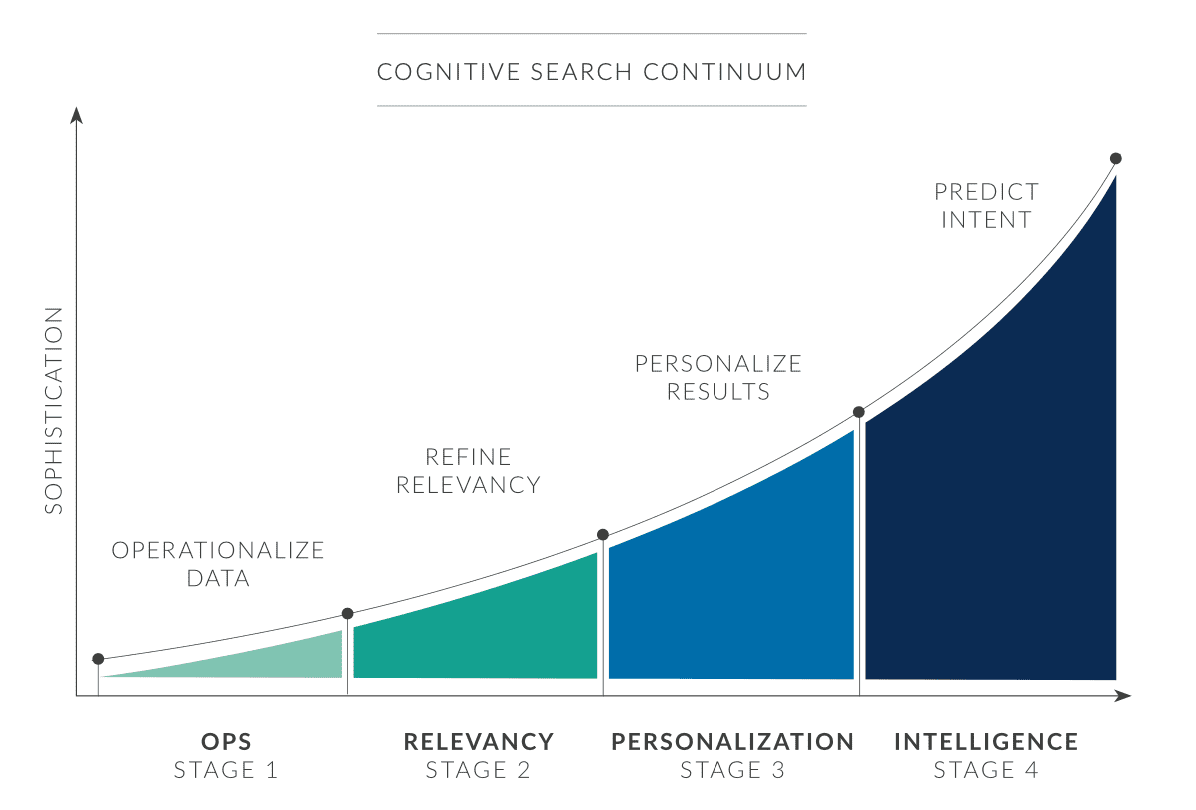Cognitive Search Use Cases in Ecommerce Search Solutions
How retailers can evolve from simple catalog search to a hyper-personal customer experience.

Last week we talked about the two main nightmares keeping retailers up at night – terrible search results and a terrible customer experience.
These challenges aren’t insurmountable, these are all problems that other companies have solved. There’s a pretty clear path from outdated, outmoded ecommerce search to the promised land of treating customers as individuals by providing them with the uniquely personal experience they desire.
Lucidworks developed the Cognitive Search Continuum, a four-part maturity model showing how retailers can start to evolve their search platform from simple catalog search to a hyper-personal customer experience.

Stage 1: Ops
Stage one is pretty simple – just getting everything up and operating. You have a basic search platform that sits alongside your product catalog listings. It might just be the native search in your ecommerce platform itself. Customers can search for products by name and brand and other simple product attributes across just a few data sources like a product catalog with product descriptions. There is no personalization so customers receive one generic search experience. Also be sure your analytics and logs are organized and enriched so when you’re ready to use that data for advanced capabilities later on, it’s already there ready to go.. Long story short: Shoppers search for things, and (more or less) find them.
Stage 2: Relevancy
Stage 2 is about improving search results through both manual adjustments from merchandisers and automated strategies. Merchandisers can add boosts and bury particular products up and down in search results. Search results consistently show the best products for a query and rank them correctly. You’re selling more of what you want to be selling. The long-form text descriptions of products have been indexed to improve relevancy. The system has picked out various characteristics like color, size, brand, and put them into fields that can be sorted and filtered. Synonyms and misspellings are automatically detected and corrected.
Stage 3: Personalization
The third stage in our continuum is when platform, data, and applications all work together. Customer behavior like browsing, clicks, views, past purchase history, current session affinities, past queries, inventory data, CRM data, shifting tastes, and other signals are captured and aggregated to create a customized experience specific to each user for each specific visit. Search becomes predictive and the recommendations are complementary.
Stage 4: Intelligence
Stage 4 is about getting intelligence into the search and shopping application experience as one fully automatic feedback loop. Customers can talk to your apps and it can make suggestions through chatbots and other channels using natural language processing. Apps have gone beyond typing into a search box and offer input through voice, image upload, or media file. When shoppers don’t ask specific enough questions, the system asks clarifying questions. Low-performing queries are identified and improved.
Of course, the journey is never complete. Using the cognitive search continuum as a roadmap, you can iterate through the stages to provide the best experiences for faster insights and increased productivity.
LEARN MORE
Contact us today to learn how Lucidworks can help your team create powerful search and discovery applications for your customers and employees.